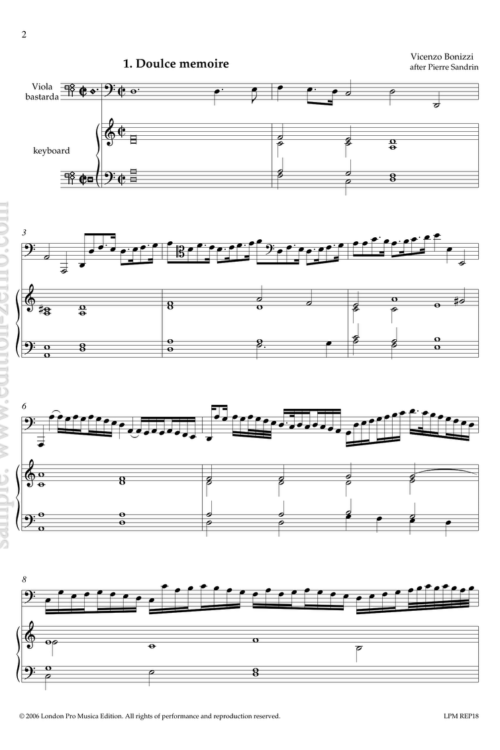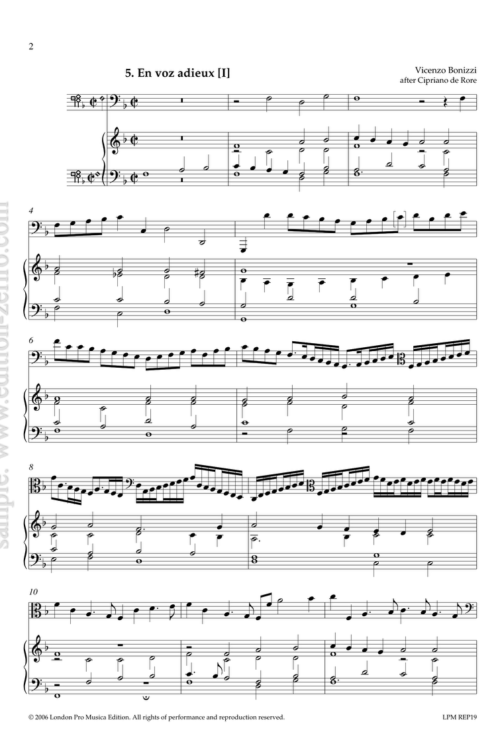Come On In
Vicenzo Bonizzi was born in Parma, probably in the 1570s, He studied viol playing with Orazio Bassani (another composer of viola bastarda music, whose pieces will also be included in the present series), and organ with Claudio Merulo. He spent much of his working life in his birthplace: for a long time he was organist and maestro di cappella at the cathedral there.
Wicenzo Bonizzi’s Alcuni Opere /Di diversi auttori/ a diversi voci/ Passaggiate principalmente per la Viola Bastarda, ma anco per ogni sorte di Stromenti, e di Voci was published in Venice in 1626. It contains extremely elaborate versions of 8 chansons and madrigals (one appearing in two settings) that go back a long way, in the case of Doulce memoire to the 1530s.
The collection is remarkable for its virtuosity, but in some ways is quite conservative: the most common form of cadence, for instance, is one that goes back well into the sixteenth century. Bonizzi demands a very wide range from the instrument, the total compass of the 8 pieces being GG-f’’; the player is expected to go across a large part of the range quite quickly, as in the occasional bar with four different Gs.While Bonizzi’s pieces are not expressive in the way that those of Rognoni and Bovicelli are, he shows great skill in the art of using the same figure on different degrees of the scale, and in different harmonic contexts. He has his own distinctive riffs too.
All the models date back to the middle of the 16th century, the latest publication date being 1558. Given Bonizzi’s extreme use of small note values, and the general slowing down of the beat that took place during the second half of the 16th century,it is quite clear that the models are purely harmonic structures for improvising against, and there is no question of incorporating the viola bastarda part in a performance of the original piece.



